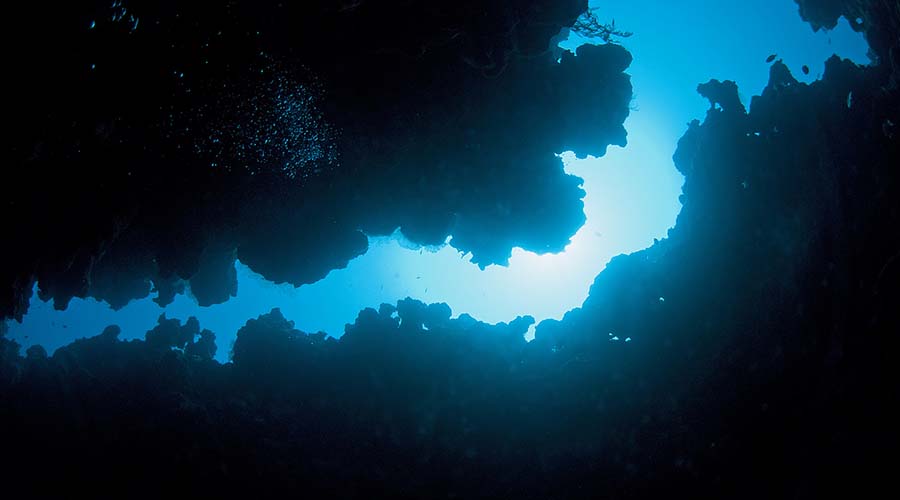North Trips
Ras Mohammed
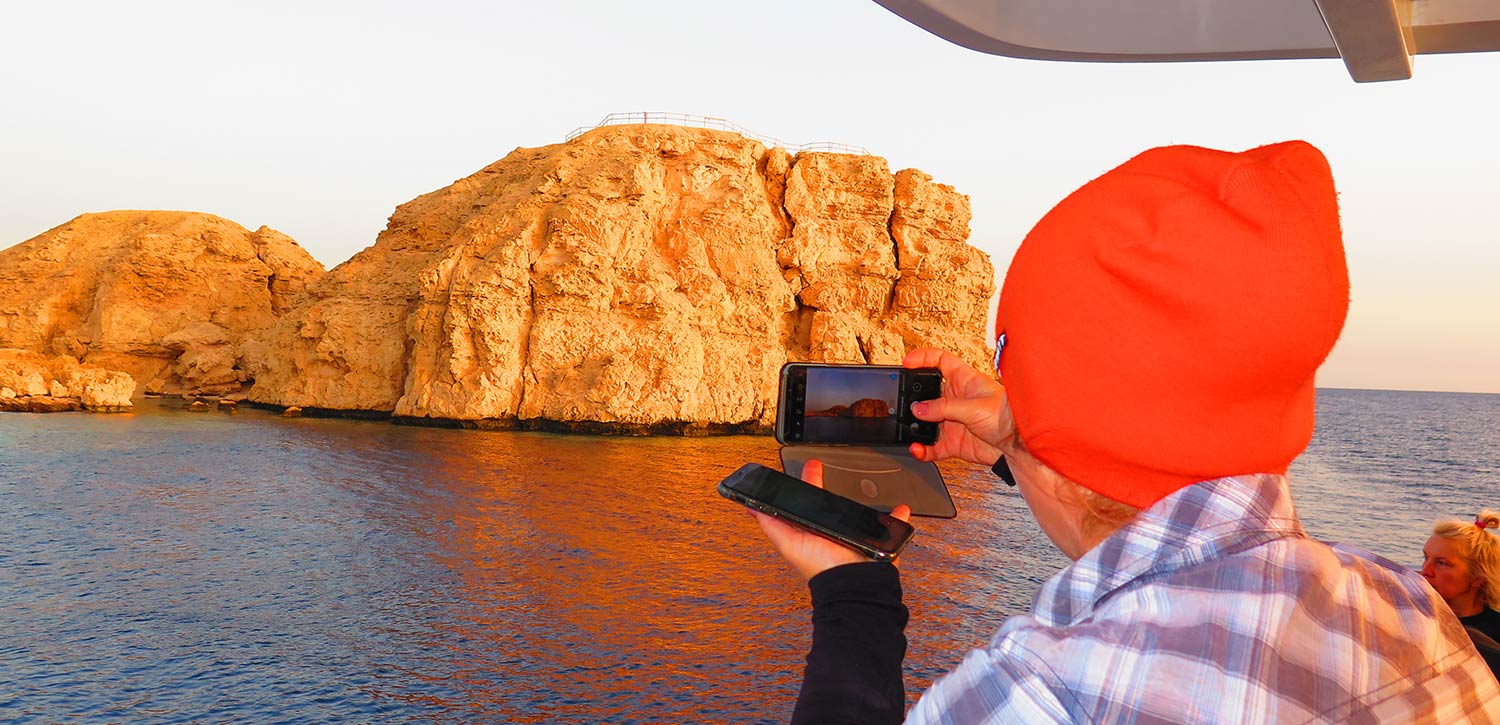
Ras Mohamed is the most popular dive site in the Red Sea. Ras Mohamed is the headland at the southernmost tip of the Sinai Peninsula, overlooking the Gulf of Suez and the Gulf of Aqaba. In 1983 it became a national park, protected from fishing and other human activities. It is teeming with marine life and amazing soft coral. Enjoy relaxing drift dive along beautiful walls. In the blue you can spot pelagic fish like barracudas and trevallies.
Ras Mohammed is the most popular dive spot in the Red Sea. It is the headland at the southernmost tip of the Sinai Peninsula, overlooking the Gulf of Suez and the Gulf of Aqaba. In 1983 Ras Mohammed became a national park protected from fishing and other human activities. It is teeming with marine life and amazing soft corals. You will enjoy relaxing drift dive along the beautiful walls. In the blue you can spot pelagic fish like barracudas and trevallies.
There are ten dive spots around Ras Mohammed area among which Shark Reef, Yolanda Reef and Anemone city are the most popular.
Shark Reef and Yolanda Reef are the great reefs with beautiful corals and a teeming reef life. Keep an eye in the blue as there are many pelagic fishes such as shoals of barracudas, jacks and trevallies. Various reef sharks such as grey and blacktip reef sharks can also be spotted in the blue. At the end of your dive you can see the remains of the Yolanda Wreck that was transported toilets.
Anemone City is the beautiful dive spot with the interesting underwater topography featuring many plateaus which are crossing the steep reef slope. The coral formations are nice and of course there are lots of anemones and clown fishes. Pelagic fishes and reef sharks are also common encounters.
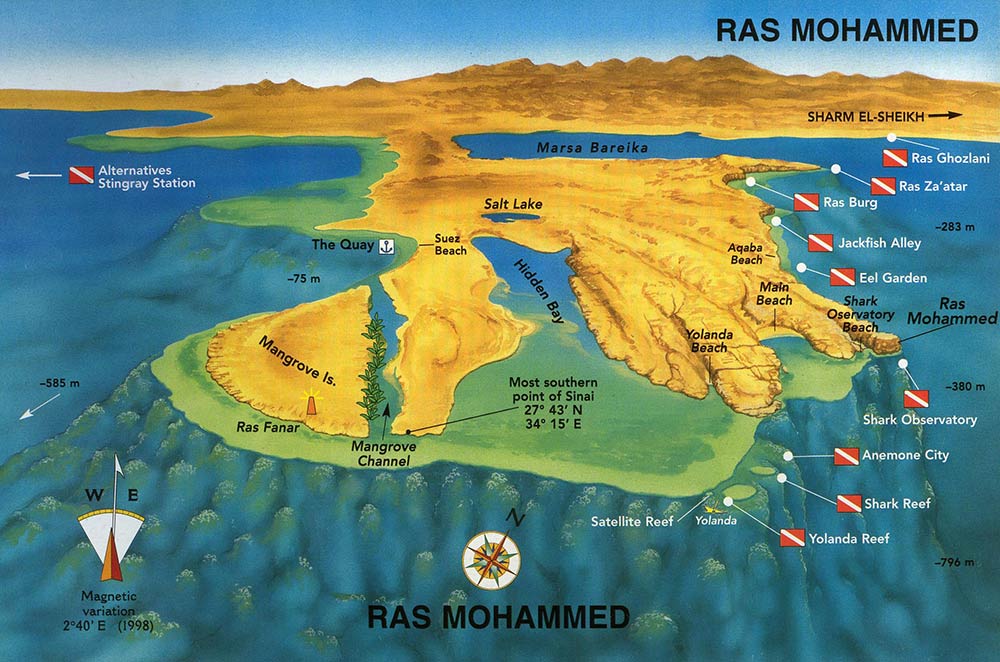
SS Thistlegorm

One of the best wreck dive spots in the world. The Thistlegorm was a British armed Merchant Navy ship built in 1940. It sank in 1941 during the World War II. Now the Thistlegorm is an open museum, still containing locomotives, tanks, motorbikes, riffles and much more. The wreck also attracts great marine life.
The Thistlegorm is 126 m long and 18 m wide, lying down at depth of 30 m on a sandy seabed coming from north (the bow) to south (the stern). Stern section lies almost on its side at 45 degrees, remainder of the wreck is in the nearly upright position. There are four cargo holds, each hold has two levels. These twin decks form a large shelf stretching under the decks of the wreck. The hold no 4 is damaged by explosion which ripped the roof backward like opening a tin of sardines. There was a lot of stuff hanging on the seabed around the wreck.
She has become a home for the many species of fish and some visiting the wreck, which makes the Thistlegorm as a panorama.
Content of Thistlegorm:
- 120 mm anti-aircraft gun – Bedford trucks – Heavy caliber machine gun – Armored vehicles
- BSA motorcycles – Norton 16H – Cases of ammunition – Bren guns – Radio equipment – Riffles
- Wellington boots – Aircraft parts – Railway water carriers – Tires – Locomotives – Wires
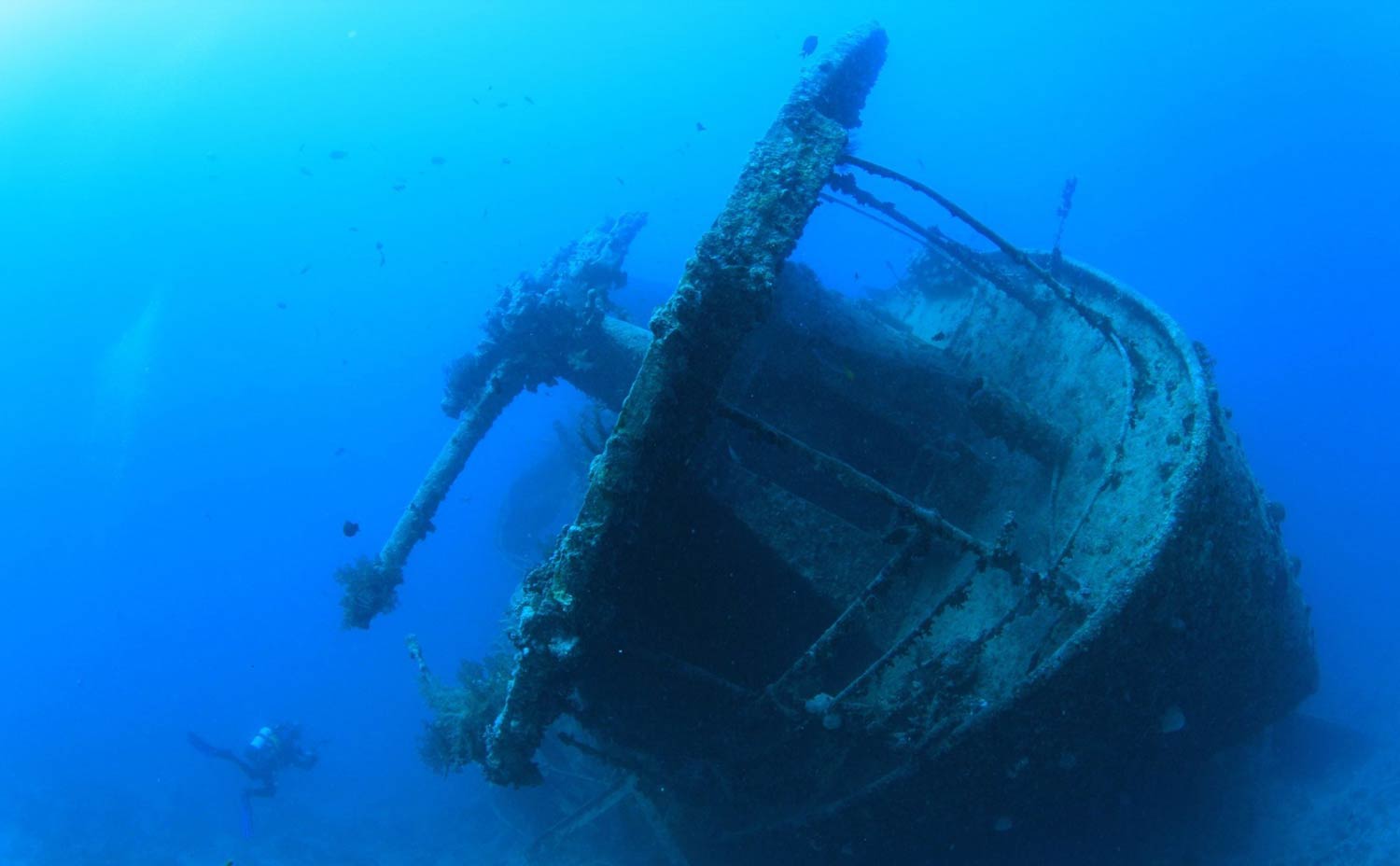
Abu Nuhas
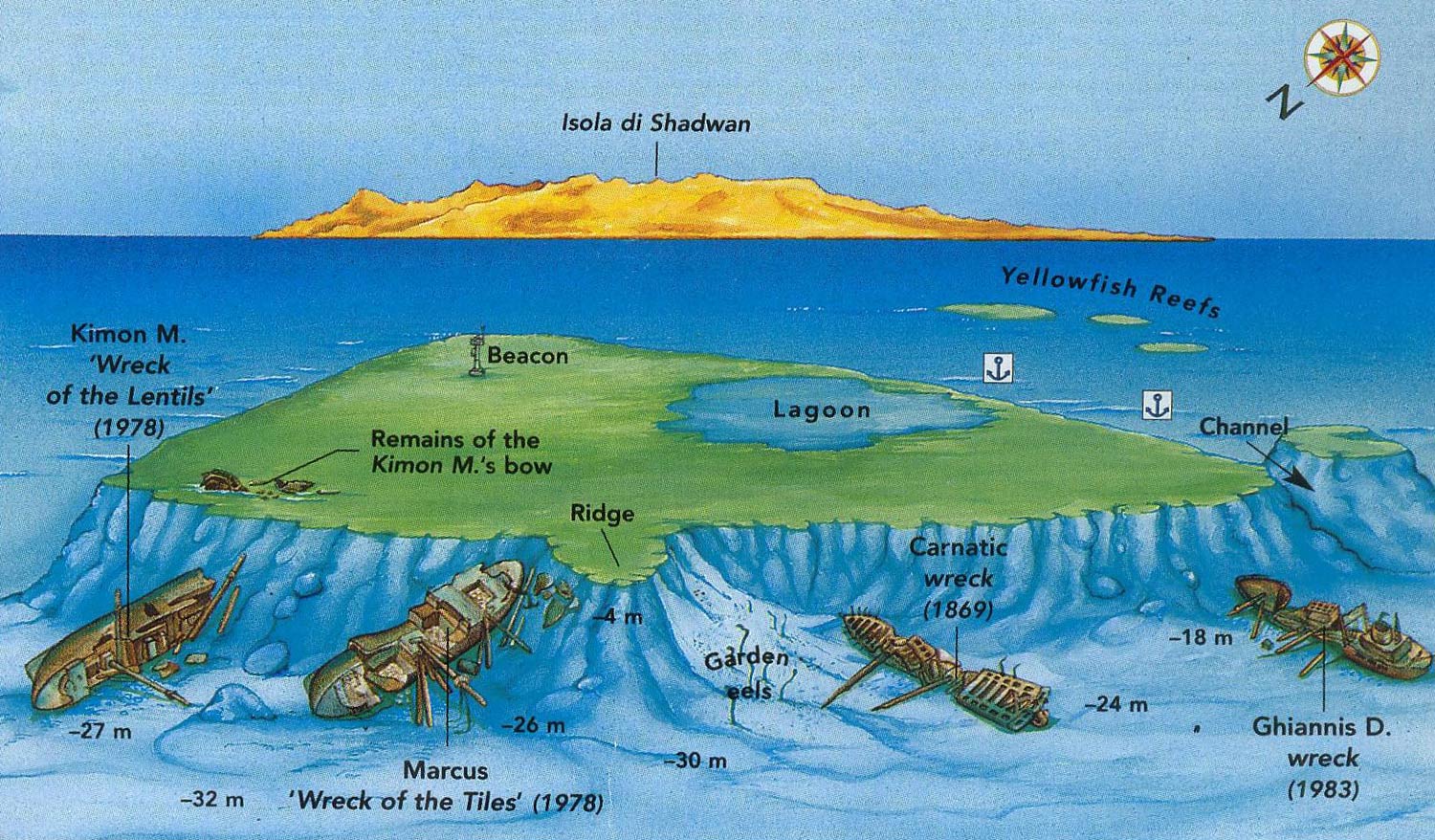
Abu Nuhas is a large triangular shaped reef located northeast of Shedwan Island nearby the shipping channel that provides ships access to the Suez Canal. Bad luck suffered some sunken ships on north site of the reef. Here you will find a very dramatic and exciting structure. That’s the power of nature to turn a man-made object into the scrap metal.
Wrecks lying in order from west to east – the GIANNIS D – CARNATIC – Marcus – Kimon M
The GIANNIS D was a Greek cargo ship with a length of 100 m and a width of 16 m with two cargo holds. She was coming from Yugoslavia to Saudi Arabia and carrying sawn softwood. On 19 April 1983 she hit the northwest corner of Abu Nuhas.
The wreck lies next to the reef in three separate sections: bow, midship and stern. The stern on the western side rests on the seabed at an angle 45 degrees from 5 m to 21 m. The midship is damaged on the top of the sloping reef from 12 m to 18 m. The bow rests perfectly on the side with the deck facing the blue.
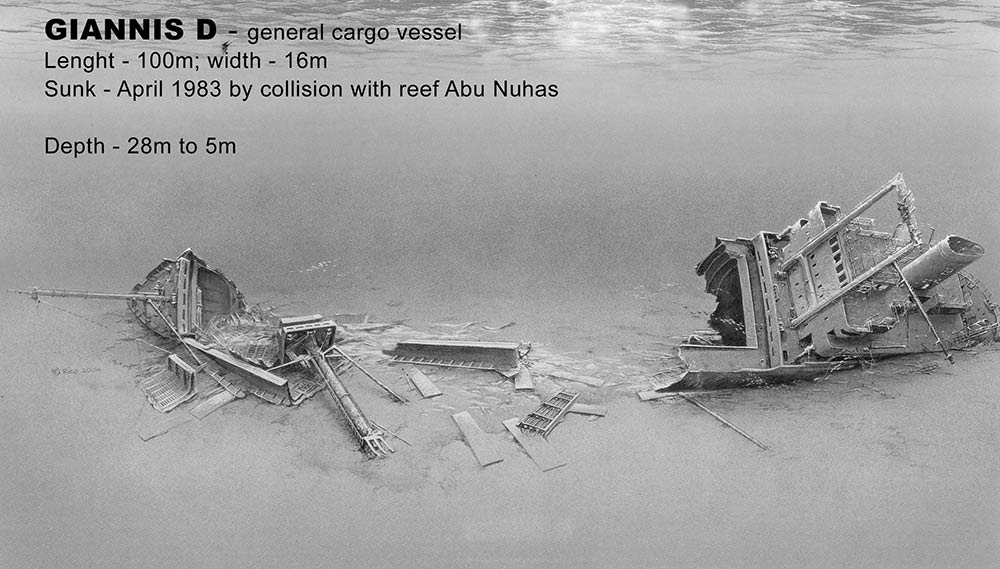
The CARNATIC is one of the oldest wrecks in the Red Sea. She lay alone on the reef over 100 years before being joined by other sunken ships. The Carnatic was an English passenger sail and steamship, 90 m long and 12 m wide. She operated on the Suez Bombay route in the last few years before the opening of the Suez Canal. In the last voyage she was carrying 176 crew members, 34 passengers and cargo of wine, cotton bales, copper sheeting, Royal Mail and 40,000 pieces of the Royal Courte gold.
On September 12, 1869, the Carnatic ran aground on Abu Nuhas reef. She stayed 36 hours at the top of the reef, then split in half and sank. She lies on the port side, the bow facing east (like the Giannis D). She is divided into two parts, the bow and the stern. The midship is broken. All the decking wood has rotted, so all that’s left is its structure, the masts stretching out as long fingers on the seabed.

The MARCUS is a greek cargo ship which was heading from Italy to Jeddah and carrying cargo of tiles. In May 1978, she sank north of Anu Nuhas. The wreck is also known as the CHRISOULA K. The wreck is laying on a sloping reef, starting from 3 m (bow) down to 26 m (stern). Main body of the wreck is set upright with the three cargo hold stuff of tiles. The wreck is known as the Chrisoula K.

Rosalie Moller

The Rosalie Moller was the English merchant transport ship 108 meters long and 14 meters wide. She was called into service by the British Royal Navy at the beginning of the World War II.
She was being used for the delivery of the coal shipments in British waters. In August 1941, the Rosalie Möller was assigned to deliver a cargo of Best Welsh Coal to Alexandria through the long journey around the tip of Africa. On October 6, she arrived to the Gulf of Suez and anchored between Gubal and Quisum Islands. She waited her turn to head north to cross the Suez Canal. After two days she was attacked by Henkel HE111. That was the same aircraft that sank the Thistlegorm and returned to attack the Rosalie Moller on 8 October 1941. Two bombs exploded in the hold no 3 causing heavy damage on the starboard side. Then the ship went down upright on a sandbed. Coming from north (bow) to south (stern), the bow sits at a depth of 50 m. The rudder and propeller are located on 45 m, deck on 35 m. Most of the deck equipment is still in place, the masts and the funnel lie on one side.
- Stern: metal frame, there is a second kitchen, the handrails are still intact, aft mast lies on one side with some winches around.
- Midship: Engineer’s room, dispensary, doctor’s room and the main kitchen are on the deck level. Captain’s and dining rooms are above. It’s easy to swim from room to room.
- Bow: winch gears, the port anchor is up and the starboard down. It’s very easy to explore.

Straits of Tiran
Straits of Tiran is located at the Gulf of Aqaba entrance, between Sharm El Sheikh and Tiran Island. There are four coral reefs are situated in the middle of the straits: Gordon Reef, Thomas Reef, Woodhouse Reef and Jackson Reef. Straits of Tiran is more suitable for experienced divers to enjoy superb fast currents, colorful soft corals, drop offs, deep canyons and random observations of pelagic fish.

Jackson Reef is the northernmost dive spot in the Tiran reef chain – rounder shape reef, sloping drop off is covered by a mixture of hard and soft corals. Jackson reef connects to Woodhouse reef at the depth of 35 m.

Woodhouse Reef is a narrow and long shape reef. Dive could be done here only as a drift under good weather conditions.

Thomas Reef is located in the middle of the Tiran reef chain. It is smallest one out of the four reefs and has the strongest current. Thomas Reef is a drop off rising from a deep water. Eastern side drops steeply down to 28 m and offers the most popular dive at Tiran, a sandy plateau with some particularly large gorgonian mixed with soft corals. At the end of this plateau the deep canyon starts from 32 m to 80 m crossed by three arches.

Gordon Reef is located at the end of Tiran reef chain with the large plateau from 3 m to 30 m. It offers very relaxing dives and night dives as well.
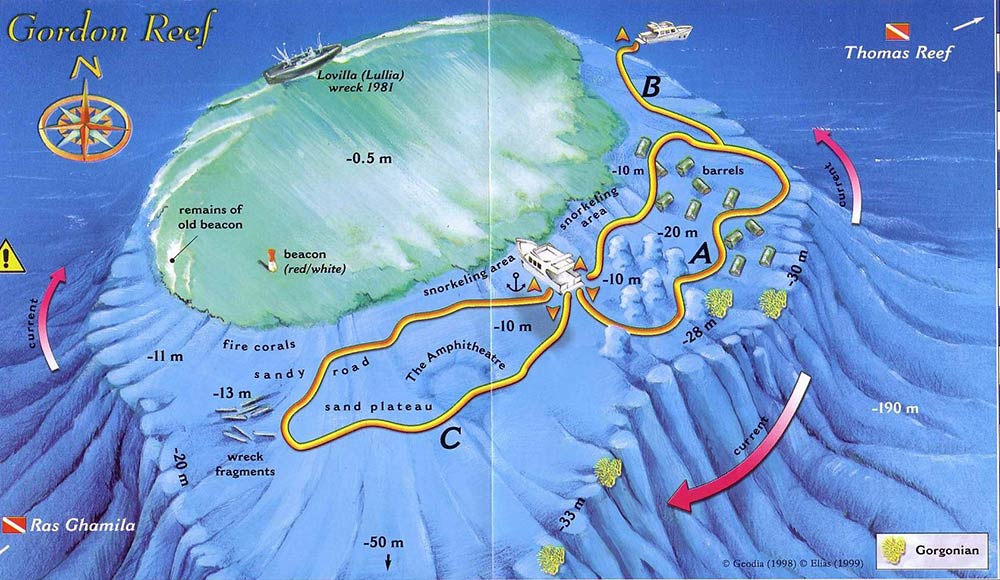
Dahab
Dahab is a fantastic city located 80 km north of Sharm El Sheikh. Near Dahab region up to Gulf of Aqaba you can visit two of the most popular dive spots in the world: Blue Hole and Dahab Canyon.
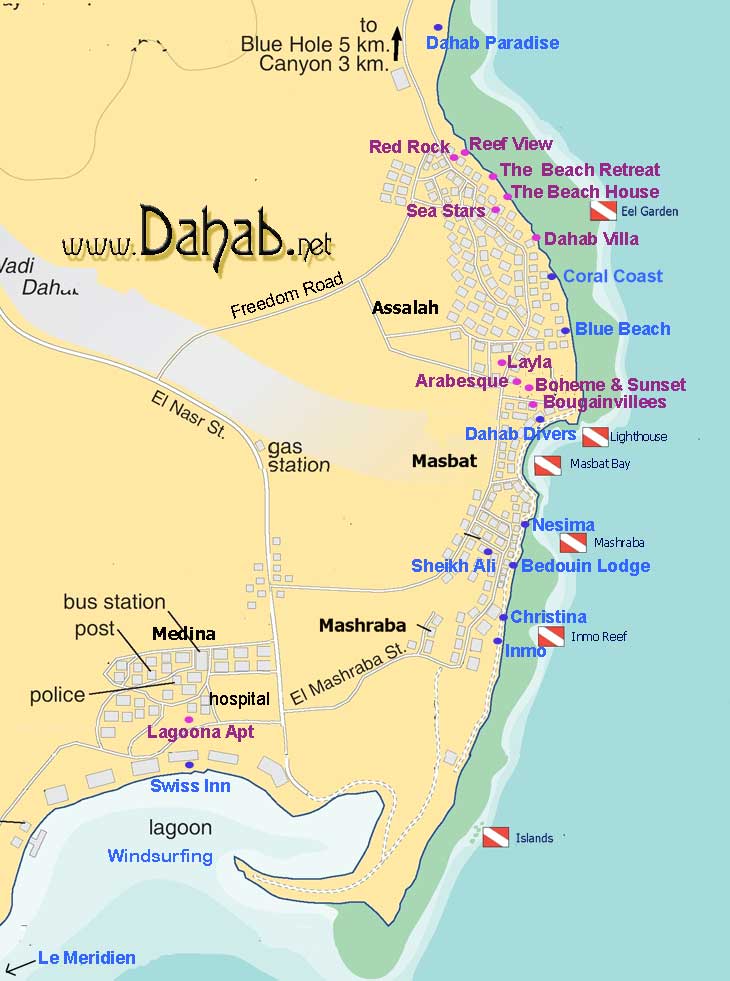
Blue Hole is a giant sinkhole in the reef plateau. This gigantic underwater hole sinks to a depth of up to 100 meters. You can cross a gigantic arch that leads to the sea at the depth of 56 meters.
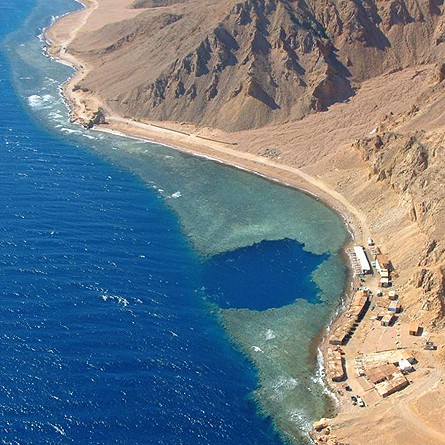
Dahab Canyon is situated 1,5 km south of Blue Hole. From the shore the snake-shaped canyon drops down from 10 m to 90 m offering divers several entrances to a depth with natural sunlight.
